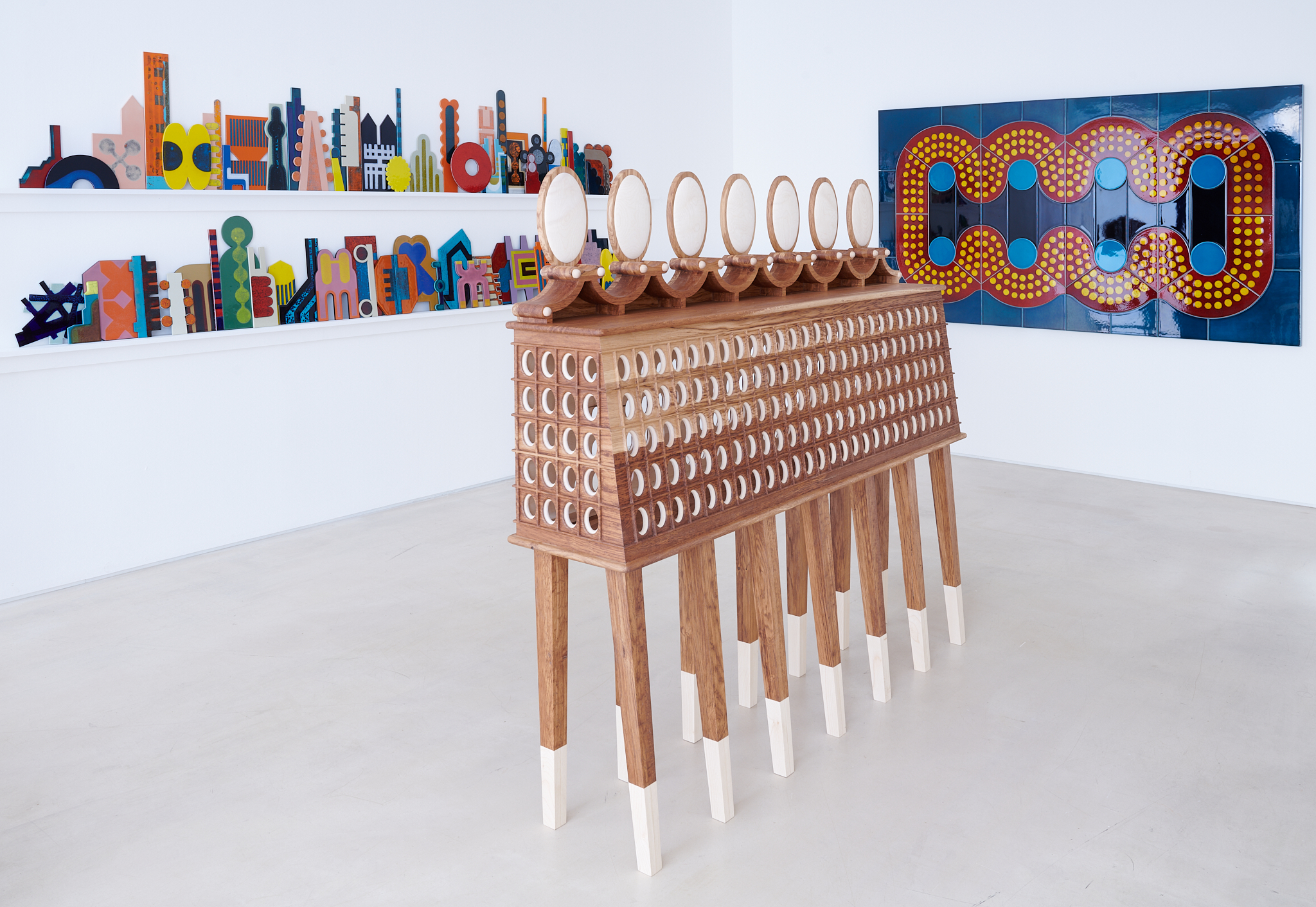


Lubna Chowdhary’s new exhibition at PEER shows new work by an artist usually associated with ceramics. The CAS acquired her work through the Jackson Tang Ceramics Award in 2020 for Birmingham Art Gallery, as well as for other UK institutions such as Manchester Art Gallery, Mead Art Gallery and Bradford Museum.
The exhibition is called Erratics, and here Chowdhary experiments with wood, rope and other materials, displaying her wonderful ability to experiment with the possibilities of each.
Entering the first room one first encounters Disobedient Typologies, 2021, which comprises 36 small ceramic maquettes that resemble – albeit distantly – buildings. Her work sits at the cross-roads of different cultures, geographies and mind sets, and these echo dystopian futures and past civilisations. The composition and the combination of overlapping elements recalls Metropolis, her multi-object installation of over 1000 objects created between 1991 and 2019, which is now in the permanent collection of the Jameel Arts Centre in Dubai.
Next door, some of the prototypes are transposed into the three new wooden sculptures that resist any linear explanation. Made of oak and sycamore their scale confronts us with human typologies. Erratic n 1 is a box pierced with regular holes and supported with 14 legs. Seven oval forms are situated on the top of the structure resembling mirrors without reflections. This absence of my image, combined with the repetition of the elements and the rhythm of the composition gives a sense of the uncanny to the sculpture. One has the urge to engage with it as if it were a living thing. Could it have been a character in a play? A robotic figure?
Too small to be buildings, with no practical use, the sculptures resist categorisation. The way the wood is perfectly carved and sanded leaves no space for nostalgia. The object was made combining traditional woodworking techniques with computer-programmed manufacturing. Using such disparate techniques has been a constant element in Chowdhary’s practice.
A desire to make it live is perhaps at odds with how the object stemmed out of the artist’s imagination. I remember Lubna Chowdhary telling me a few months ago about her longstanding fascination into colonial period furniture, something she became interested in while in residence at the V&A in 2017. Most of the objects she encountered at the V&A were made by Indian makers following Victorian or Edwardian designs. Chowdhary wanted to try something similar by creating objects whose vocabulary is the result of both her childhood in Asia and her Western upbringing in the UK. Born in Tanzania to parents from pre-partition India, Lubna grew up in Rochdale. The form and design of the sculptures are hybrids of these experiences.
Erratics are in the middle of a cultural ‘switch’. In a recent interview she said: “I felt that I could work towards making in either direction – either with my inherited culture in the UK, or the culture I originated from in Asia.” This is a statement through which many people can relate to. Belonging, displacement and freedom are topics at the core of Lubna Chowdhary’s work.
Other objects in the exhibition speak of this duality, either resisting it or distorting it. New works made during a residency at IAPSIS in Sweden are made using bright blue rope to design abstract forms on the wall. These shapes and colours push the viewer to rethink geometry, colour and abstraction. Lubna Chowdhary shows in this exhibition how to enhance the visibility of forms and colours through an experimentation with materials that pushes these to be things other than themselves.
Ilaria Puri Purini
Curator of Programmes
PEER, 97-99 Hoxton Street, London N1 6QL. Wednesday to Saturday, 12.00–18.00 and by appointment. Exhibition continues until 20 November 2021. www.peeruk.org